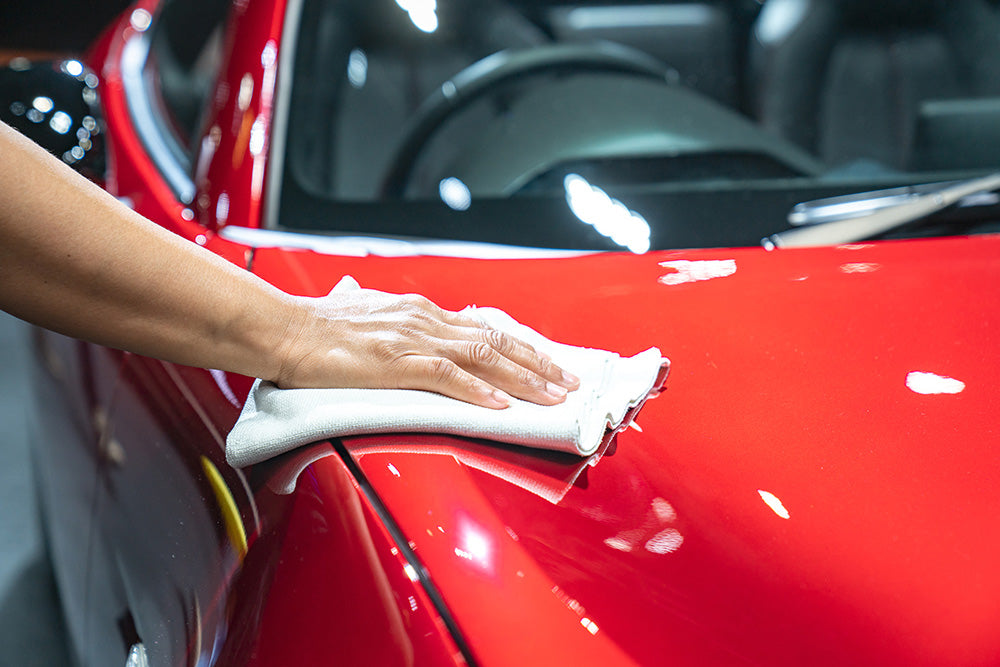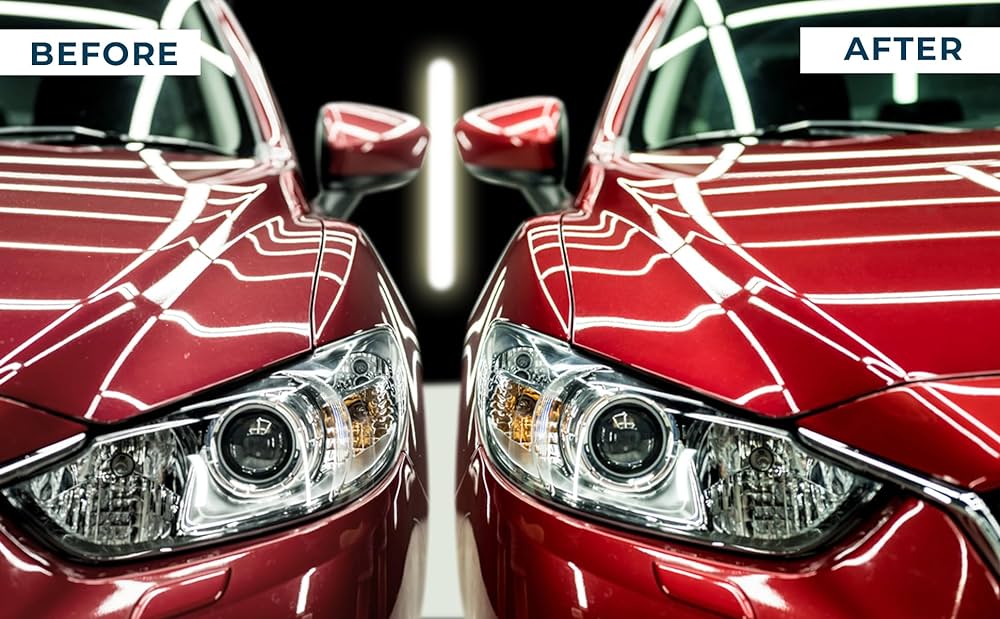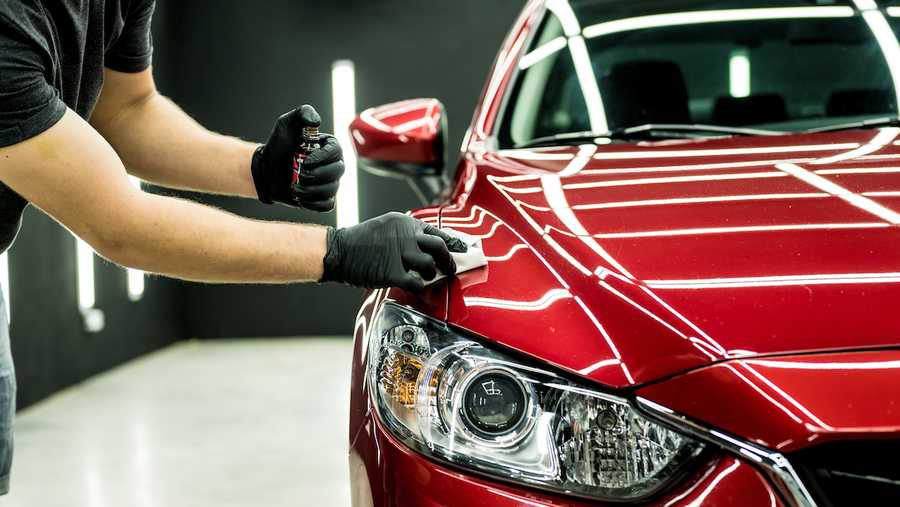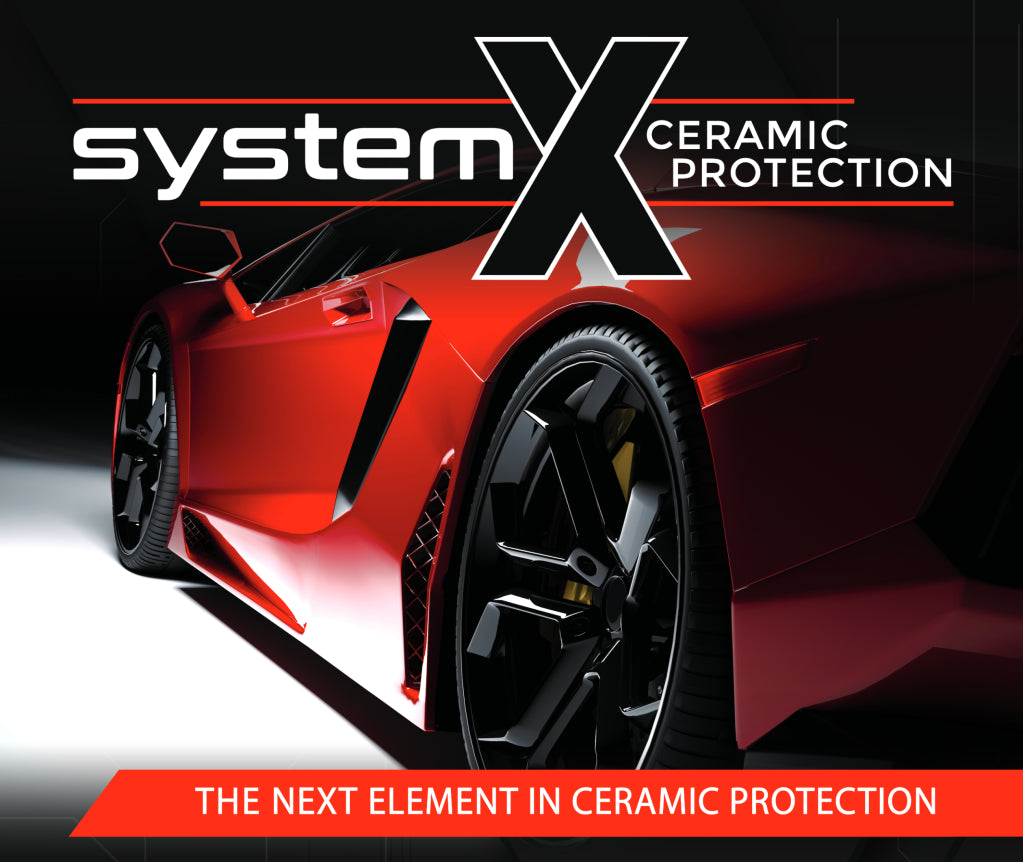Ceramic Coating Vs. Wax: Which is Best for Your Car?
When it comes to maintaining the glossy, pristine finish of your car, the debate between ceramic coating and wax is ongoing. Both methods aim to protect your car's paint and enhance its appearance, but they do so in different ways and come with their own sets of advantages and disadvantages. In this blog, we'll dive deep into the world of ceramic coatings and waxes, comparing their benefits, longevity, cost, and overall effectiveness to help you make an informed decision for your vehicle.
What is Car Wax?
Car wax has been a staple in automotive care for decades. It is typically made from natural waxes, such as carnauba, or synthetic polymers. Wax creates a thin, protective layer over the car's paint, giving it a shiny finish and some level of protection against environmental elements like UV rays, rain, and dirt.
Types of Car Wax
- Natural Waxes: These include carnauba wax, which is prized for its deep, warm shine and excellent water beading properties.
- Synthetic Waxes: Made from polymers or other synthetic materials, these waxes often provide longer-lasting protection than natural waxes.
- Spray Waxes: Easy to apply, these are great for quick touch-ups but generally do not offer the same level of protection as paste or liquid waxes.
- Paste and Liquid Waxes: These are more durable and provide better protection and shine compared to spray waxes.

Benefits of Car Wax
- Enhances Shine: Wax provides a deep, reflective shine that enhances the appearance of your car's paint.
- Protects Paint: It offers a layer of protection against UV rays, water, dirt, and other contaminants.
- Easy to Apply: Waxing your car is relatively straightforward and can be done at home.
- Cost-Effective: Car wax is generally more affordable compared to ceramic coatings.

Drawbacks of Car Wax
- Short-Lived Protection: The protection offered by wax usually lasts only a few months, requiring frequent reapplication.
- Less Durable: Wax is not as durable as ceramic coatings and can wear off quickly, especially in harsh weather conditions.
- Labor-Intensive: While easy to apply, waxing requires frequent maintenance to keep your car protected and shiny.
What is Ceramic Coating?
Ceramic coating is a liquid polymer that is applied to the exterior of a car. It chemically bonds with the vehicle's factory paint, creating a layer of protection that is significantly more durable than wax. Ceramic coatings are often made from silicon dioxide (SiO2) and provide a long-lasting shield against a variety of environmental hazards.

Benefits of Ceramic Coating
- Long-Lasting Protection: Ceramic coatings can last for years, sometimes up to five years or more, with proper maintenance.
- Superior Durability: The bond formed between the ceramic coating and the car's paint is much stronger than that of wax, providing better protection against UV rays, oxidation, and minor scratches.
- Hydrophobic Properties: Ceramic coatings create a hydrophobic surface, meaning water and dirt will bead up and roll off, making your car easier to clean.
- Enhanced Gloss: Ceramic coatings provide a deep, reflective shine that can rival or surpass that of car wax.

Drawbacks of Ceramic Coating
- Cost: Ceramic coatings are significantly more expensive than car wax, both in terms of product cost and professional application fees.
- Application Process: Applying a ceramic coating is more complex and time-consuming, often requiring professional installation to achieve the best results.
- Not Completely Scratch-Proof: While ceramic coatings offer superior protection, they are not invincible. Deep scratches and chips can still penetrate the coating and damage the underlying paint.
Ceramic Coating Vs. Wax: A Head-to-Head Comparison
Durability
When it comes to durability, ceramic coatings are the clear winner. While wax typically lasts a few months, ceramic coatings can provide protection for several years with proper maintenance. This makes ceramic coatings ideal for car owners looking for long-term protection without the need for frequent reapplication.
Protection
Ceramic coatings offer superior protection against a wide range of environmental hazards. They are highly resistant to UV rays, oxidation, bird droppings, tree sap, and minor scratches. In contrast, car wax provides a basic level of protection that needs to be reapplied frequently to maintain its effectiveness.
Gloss and Shine
Both ceramic coatings and wax can enhance the appearance of your car's paint, but in different ways. Wax gives a warm, deep shine that many car enthusiasts love. Ceramic coatings, on the other hand, offer a reflective, glass-like finish that can make your car look like it just rolled off the showroom floor.
Ease of Maintenance
Ceramic coatings make car maintenance easier due to their hydrophobic properties. Water, dirt, and grime slide off the coated surface, reducing the frequency and effort required for washing your car. Waxed surfaces, while offering some level of water beading, do not repel contaminants as effectively as ceramic coatings.
Cost
Wax is the more affordable option upfront, with products and DIY kits available at a relatively low cost. Ceramic coatings, however, involve a higher initial investment. Professional application can be costly, but the long-term benefits and reduced maintenance needs can offset the initial expense over time.
Application Process
Waxing a car is a straightforward process that can be done by most car owners at home. It involves applying the wax, allowing it to haze, and then buffing it off to reveal a shiny finish. Ceramic coatings, on the other hand, require a meticulous application process. The car's paint must be thoroughly cleaned and prepped, and the coating must be applied in a controlled environment to ensure proper bonding and curing. Professional installation is often recommended to achieve the best results.
Speak to a Certified Installer

Which One Should You Choose?
Choosing between ceramic coating and wax depends on your specific needs, budget, and preferences. Here are some scenarios to help you decide:
Choose Ceramic Coating If:
- You want long-lasting protection and are willing to invest in a higher upfront cost.
- You prefer a low-maintenance solution that makes car washing easier.
- You seek superior protection against UV rays, oxidation, and environmental contaminants.
- You desire a high-gloss, reflective finish that lasts for years.
Choose Car Wax If:
- You are looking for an affordable, DIY solution for protecting your car's paint.
- You enjoy the process of regularly maintaining and waxing your car.
- You prefer the warm, deep shine that natural waxes provide.
- You do not mind reapplying the product every few months to maintain protection and shine.
How to Maintain Your Car After Applying Ceramic Coating or Wax
Regardless of whether you choose ceramic coating or wax, proper maintenance is crucial to keep your car looking its best.
Tips for Maintaining a Waxed Car
- Wash Regularly: Use a pH-balanced car shampoo to wash your car regularly, removing dirt and contaminants that can degrade the wax.
- Reapply Wax: Depending on the type of wax used, reapply it every few months to maintain protection and shine.
- Use a Detailer Spray: Between wax applications, use a quick detailer spray to enhance shine and remove light dust and fingerprints.
Tips for Maintaining a Ceramic Coated Car
- Wash with Care: Use a pH-neutral car shampoo and avoid harsh chemicals that can degrade the ceramic coating.
- Avoid Automatic Car Washes: Stick to hand washing to prevent damage from abrasive brushes and harsh chemicals found in automatic car washes.
- Use a Maintenance Spray: Use a ceramic coating maintenance spray periodically to boost hydrophobic properties and enhance gloss.
- Inspect Regularly: Check for any signs of wear or damage to the coating and address them promptly to maintain optimal protection.
Both ceramic coatings and waxes have their own unique advantages and drawbacks. Ceramic coatings offer long-lasting, superior protection and ease of maintenance, making them an excellent investment for those seeking durable protection and a high-gloss finish. On the other hand, waxes provide an affordable, DIY-friendly solution that delivers a classic, warm shine but requires more frequent reapplication and maintenance.
Ultimately, the choice between ceramic coating and wax depends on your personal preferences, budget, and how much time and effort you are willing to invest in maintaining your car's appearance. By understanding the differences and benefits of each option, you can make an informed decision that best suits your needs and keeps your car looking its best for years to come.
For more detailed information on car care products and techniques, be sure to contact Auto Oasis. Our comprehensive guides and reviews can help you make the best choice for your vehicle's protection and appearance.
More About Ceramic Coating
View all-

Ceramic Coating Vs. Wax: A Head-to-Head Comparison
Discover the ultimate guide to ceramic coating vs. wax for car paint protection. Learn the benefits, drawbacks, costs, and maintenance tips for both options. Whether you seek long-lasting, superior durability...
Ceramic Coating Vs. Wax: A Head-to-Head Comparison
Discover the ultimate guide to ceramic coating vs. wax for car paint protection. Learn the benefits, drawbacks, costs, and maintenance tips for both options. Whether you seek long-lasting, superior durability...
-

What Is Ceramic Coating?
Ceramic coating, also known as nano-ceramic coating, is a liquid polymer that chemically bonds with the vehicle's factory paint. This bond creates a protective layer that is incredibly durable and...
What Is Ceramic Coating?
Ceramic coating, also known as nano-ceramic coating, is a liquid polymer that chemically bonds with the vehicle's factory paint. This bond creates a protective layer that is incredibly durable and...
-

Top 10 Ceramic Coatings
Offering unmatched shine, durability, and protection against environmental elements, ceramic coatings are the ultimate solution for keeping your car in top-notch condition. In this blog, we'll delve into the top...
Top 10 Ceramic Coatings
Offering unmatched shine, durability, and protection against environmental elements, ceramic coatings are the ultimate solution for keeping your car in top-notch condition. In this blog, we'll delve into the top...



